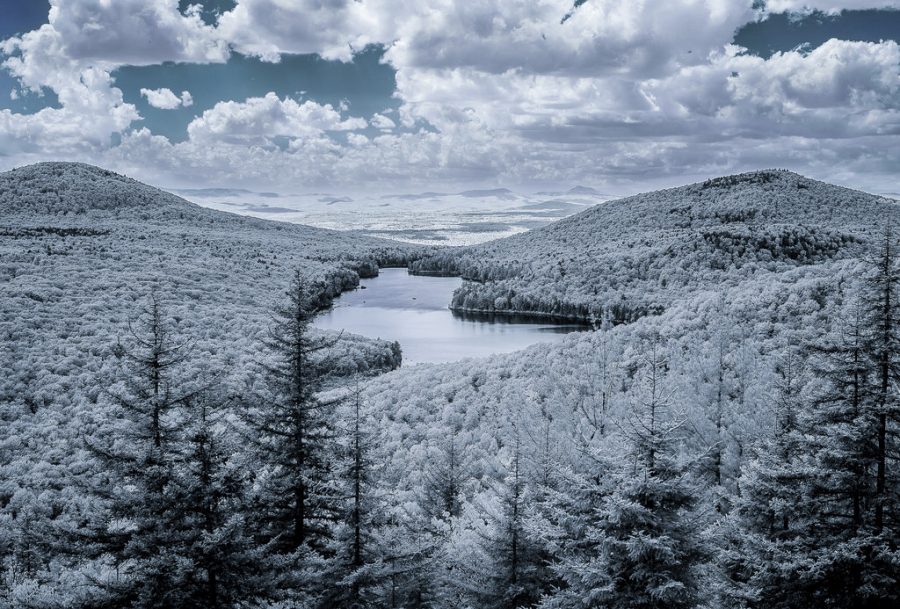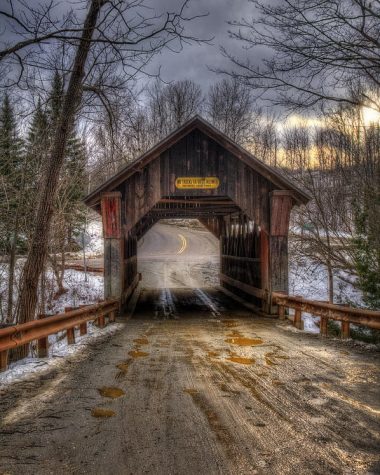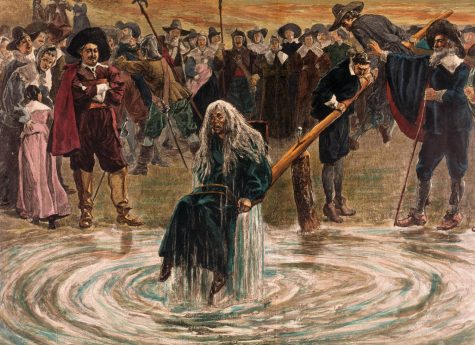Vintage Vermont Lore I: Thaw Me Out in the Spring
Anyone who has lived in Vermont soon realizes that this state isn’t quite like the others; seriously, a lot of people don’t even know it’s a state (I’ve been asked more than once “Vermont…what state’s that in?”). With that said, like most strangely obscure places, Vermont has its share of lore and legends that make it as interesting as any thriving metropolis, stories just as unique as the state itself. Join me while I introduce you to a series of tales that could only come from the Green Mountains.
We will start this journey into Vermont’s lore with a story I first heard as a child, though it can hardly be considered a children’s tale. However, it is one that many of us can relate to as the cold weather creepsin, affecting nearly every part of our lives. Honestly, how often do you wake up, look at the thermometer, and immediately want to jump back into bed? Indeed, Vermont’s winters can be quite harsh and unforgiving, which is where our tale begins.
The story begins on December 21, 1887, with an article published in the Montpelier Argus and Patriot, a newspaper which ran from 1863-1920. The piece was attributed to A.M.. For generations, these initials were all that were known of the author; today, he’s been identified as local farmer Allen Morse, and considering the subject of the front-page article, his anonymity makes sense….
The author begins by claiming that the source of the article is their Uncle William’s diary; the year was undisclosed. The only date given to the reader is January 7th, followed quite ominously by,
“I went on the mountain today, and witnessed what to me was a horrible sight. It seems the dwellers there, who are unable, either from age or other reasons, to contribute to the support of their families, are disposed of in the winter months in a manner that will shock the one who reads this diary.”
The mountain Uncle William speaks of is just 20 miles from Montpelier, the state’s capital; many claim the location to be in Calais, though the story that unfolds has been told in small mountain towns all over Vermont. When I was a child, my grandfather told me the same tale about the hill folk in Bridgewater, a milltown relic halfway between Killington and Woodstock, delivering the story with a knavish grin.
The railroad arrived in Vermont in 1875, bringing the Industrial Revolution along with it. Though many Vermonters found their livelihood in the textile factories and mills that came with the iron horse, the majority of our notoriously reclusive population remained on the farm, toiling away in the fields for most of the year. The only reprieve for this hard life was the winter, when the cold and snowfall covered the fields, and kept most people indoors. However, this did not mean their daily toil was over, as winter brought a different set of problems. Food was a luxury for these people, not the commodity many of us take advantage of today. So what were these poor rural folks to do in the winter months when the food was little and the mouths were many?
A.M.’s Uncle William claims that the mountain dwellers in Calais had found what they believed to be a perfect solution. He begins by describing what he witnessed:
“Six persons, four men and two women, one of them a cripple about thirty-years-old, the other five past the age of usefulness, lay on the earthy floor, drugged into insensibility, while members of their families were gathered about them in apparent indifference….Then the bodies were carried outside, and laid on logs exposed to the bitter cold mountain air…Soon the noses, ears and fingers began to turn white, then the limbs and face assumed a tallow look.”
As grizzly as this may sound, they were not killing their family members as one might have expected. Rather, as my grandfather quite aptly put it, they were freezing them and putting them in storage until spring. Death was never the intention, as Uncle William makes clear when he describes the building of spruce and hemlock boxes in which the people would be interred in order to “protect the bodies from being injured by [the] carnivorous animals that make their home in [the] mountains.” These boxes, according to the diary, were then covered in snow and left until May.
Though this may sound far fetched, especially for the 1880s, do keep in mind that today’s doctors use cryogenics for a myriad of health problems, lowering the patient’s body temperature in a special chamber so they can treat them. At the time though, a tale like this seems quite out of this world, especially when Uncle William is told to come back on May 10th to witness their revival,
“The bodies, frozen and apparently lifeless, [were] lifted out and laid on large troughs made out of hemlock logs were placed nearby, filled with tepid water, into which the bodies were separately placed, with the head slightly raised. Boiling water was then poured into the trough from kettles hung on poles nearby, until the water in the trough was as hot as I could hold my hand in… After lying in this bath for about an hour color began to return to the bodies, when all hands began rubbing and chafing them. This continued about another hour, when a slight twitching of the muscles of the face and limbs, followed by audible gasps showed life … was returning.”
Then, after a hearty meal, they were ready to return to the fields for planting, “rather refreshed by their long sleep of four months.”
According to Allen Morse’s daughter, the farmer often told this “yarn” to his children, though she never saw any diary penned by her father’s Uncle William. Though it was convincing enough for Vermont Life magazine to include it in their 1970 book, Mischief in the Mountains: Strange Tales of Vermont and Vermonters. With that said, the validity of this account is highly suspect, especially with the way my grandfather would end this tale of “human hibernation” with uproarious laughter. It seems to me that we should doubt more than we believe, although I must say, the idea of sleeping through the cold Vermont months and waking up after the snow has come and gone, doesn’t sound all that terrible.
Sources:
Joe Citro, “Hibernating Hill Folk.” March 2, 2010. https://vprarchive.vpr.net/commentary-series/citro-hibernating-hill-folk/. Accessed on Feb 2, 2019.
“Vermont’s Depp Frozen Old Folks: Cryogenics in the snow covered hills of Vermont?” vermonter.com. Accessed on Feb 2, 2019.
Vermont History Museum. “Tall Tale or True Story.” https://vermonthistory.org/images/stories/articles/greenmountaineer/talltale.pdf. Accessed on Feb 4, 2019.
Hard, W., Green, J. , Clark Brown, J. Mischief in the Mountains: Strange Tales of Vermont and Vermonters. 1970. Vermont LIfe Magazine.







